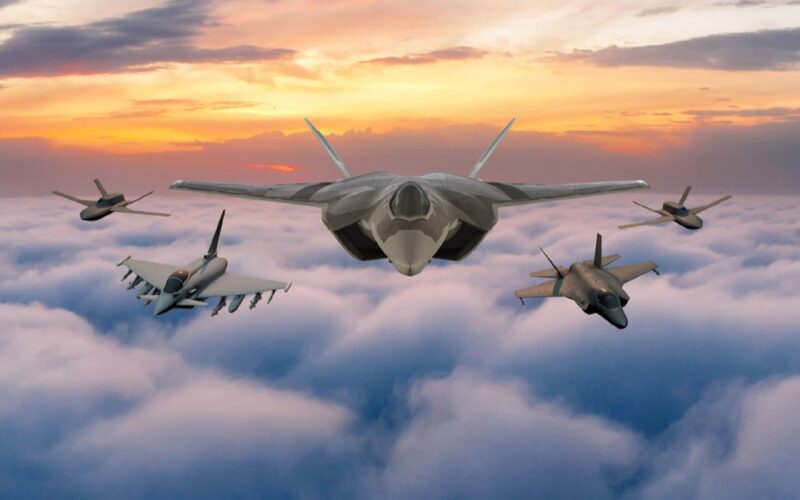Aerospace
UK, Japan, Italy Sign Agreement for Next-Gen Fighter Jet Development

The UK, Japan, and Italy, the three governments participating in the Global Combat Air Programme (GCAP), have inked a global agreement to supply a cutting-edge stealth fighter outfitted with state-of-the-art technology and capable of travelling faster than the speed of sound.
With the creation of the GCAP International Government Organisation (the GIGO) by the participating governments, the treaty signifies a significant milestone in the joint development and delivery of a next-generation fighter aircraft by 2035.
As a major industrial contributor to the effects domain of the GCAP programme, MBDA is delighted about the international treaty that the three GCAP governments have signed.
The agreement also stated that the GCAP government headquarters (HQ) will be located in the UK, with Japan providing the position of CEO initially. Delivering essential military capability, bolstering each nation’s combat air industrial capability, and obtaining value for money will be the HQ’s responsibilities.
Separately, a future joint business construct with its headquarters in the UK will be in charge of managing programme support and timely delivery, including the combat aircraft’s 2035 in-service date (known as Tempest in the UK).
Following a recent meeting in Tokyo, representatives from Leonardo, Mitsubishi Heavy Industries, and BAE Systems continued to discuss the future joint industrial construct to deliver GCAP. The industry partners announced a Collaboration Agreement in September of this year to facilitate continuing conversations about long-term working arrangements, concept maturity, and capability requirements for the next generation of combat aircraft. The joint development phase of the programme is due to launch in 2025.

Aerospace
When Ratan Tata was denied entry to the airfield at the Aero India show, he waited

During our visit to Aero India 2019, we had the unexpected opportunity to see Ratan Tata at the event, which was a thrilling moment for us. However, there was a surprising hiccup when the security staff didn’t allow him to enter due to a lack of a security pass.
Despite this, he remained calm and patiently waited for about 20 minutes until a member of the Tata team brought him the required pass, after which he calmly proceeded inside. It was a humbling sight, showcasing his composed demeanor even in such situations.
Ratan Tata ji is not only a renowned industrialist but also a trained pilot, holding a pilot’s license. In 2007, he became the first Indian civilian to fly the F-16 Falcon during the Aero India show in Bangalore—a proud moment for the nation.
His passion for aviation extended beyond flying, as he played a key role in shaping India’s aerospace industry. Under his leadership, Tata ventured into manufacturing and maintaining aerospace components while upholding its legacy of quality. Notably, Tata’s collaboration with Airbus to develop and manufacture the C295 aircraft is a testament to its growing influence in the sector.
-

 Aviation2 months ago
Aviation2 months agoMicrosoft Flight Simulator Raises $3 Million to Bring Back the An-225 Mriya
-

 Airlines2 months ago
Airlines2 months agoQatar Citizens Can Travel to the United States Without a Visa
-

 Aviation2 months ago
Aviation2 months agoQatar Airways bans these new Electronic Devices on plane
-

 Airlines2 months ago
Airlines2 months agoJapan Airlines Rolls Out Free Domestic Flights to International Passengers
-

 Travel2 months ago
Travel2 months agoQatar Airways Launches Four Additional Flights from Amsterdam
-

 Defence2 months ago
Defence2 months agoWhich Country Has the Largest Fleet of Fighter Aircraft?
-

 Airport2 months ago
Airport2 months agoWestern Sydney Airport Welcomes Its First Plane After 6 Years of construction
-

 Airlines4 days ago
Airlines4 days agoDAMAC Air: Dubai’s New Luxury Airline Offers Free Flights for Registration








